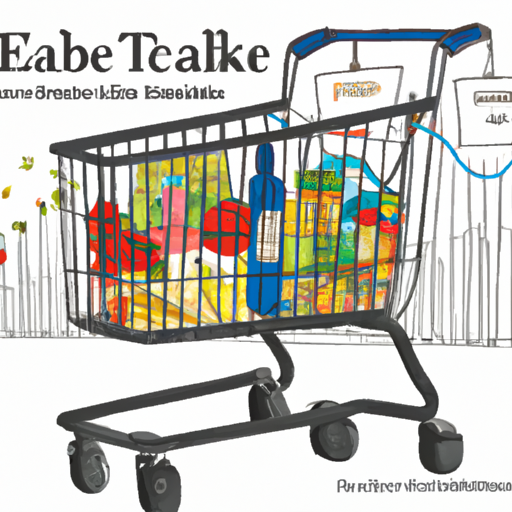Market Segmentation Analysis
So you want to know about market segmentation analysis? Well, buckle up because this article is going to give you the lowdown on this fascinating topic. Market segmentation analysis is a powerful strategy used by businesses to divide their target market into smaller, more manageable segments. By categorizing customers based on their shared characteristics, preferences, or behaviors, companies can tailor their marketing efforts to meet the unique needs of each segment. This not only allows for more effective messaging and product positioning, but also helps businesses identify untapped market opportunities and gain a competitive edge. So, if you’re ready to learn how market segmentation analysis can revolutionize your business, keep reading!

Table of Contents
Defining Market Segmentation
What is market segmentation?
Market segmentation refers to the process of dividing a large and heterogeneous market into smaller, more manageable segments based on various criteria. These criteria can include demographic, psychographic, behavioral, or geographic factors. By analyzing these segments, businesses can gain valuable insights into their target customers and develop strategies to meet their specific needs and preferences.
Importance of market segmentation
Market segmentation is crucial for businesses as it allows them to understand their customers better and tailor their marketing efforts accordingly. By dividing the market into distinct segments, businesses can identify specific customer needs and preferences, develop targeted marketing campaigns, and ultimately increase their chances of success. It also helps in optimizing resource allocation and gaining a competitive advantage in the market.
Primary methods of market segmentation
There are several primary methods of market segmentation that businesses can utilize. These methods include demographic segmentation, psychographic segmentation, behavioral segmentation, and geographic segmentation. Each method focuses on different aspects of customer characteristics and behavior to create meaningful segments that businesses can target effectively.
Benefits of Market Segmentation Analysis
Identifying customer needs and preferences
Market segmentation analysis allows businesses to gain an in-depth understanding of customer needs and preferences. By dividing the market into segments based on relevant criteria, businesses can analyze each segment’s unique characteristics and identify the specific products, features, or benefits that are most desired by these customers. This knowledge enables businesses to develop targeted marketing strategies and offer personalized solutions to meet the needs of different customer segments.
Tailoring marketing strategies
One of the significant benefits of market segmentation analysis is the ability to tailor marketing strategies to specific customer segments. By understanding the characteristics, behaviors, and preferences of each segment, businesses can create customized marketing messages and promotions that resonate with their target customers. This targeted approach increases the likelihood of attracting and retaining customers, as the marketing strategies are designed to address the unique needs and interests of each segment.
Increasing customer satisfaction and loyalty
Market segmentation analysis plays a crucial role in increasing customer satisfaction and loyalty. By understanding the specific needs and preferences of different customer segments, businesses can develop products and services that align with these requirements. This leads to higher customer satisfaction as customers feel their needs are being met. Additionally, tailored marketing communications and personalized experiences increase customer loyalty, as customers feel valued and appreciated by the business.
Optimizing resource allocation
Market segmentation analysis helps businesses optimize their resource allocation by focusing their efforts on the most profitable customer segments. By identifying the segments with the highest potential for sales and profitability, businesses can allocate their resources, such as marketing budgets, product development efforts, and salesforce, in a targeted and efficient manner. This ensures that resources are utilized effectively, maximizing their impact and ultimately driving business growth.
Gaining competitive advantage
Market segmentation analysis provides businesses with a competitive advantage in the market. By understanding their target customers better than their competitors, businesses can develop differentiated products, services, and marketing strategies that meet the specific needs and preferences of their target segments. This enables businesses to stand out in the market and attract customers who perceive the business as offering a unique value proposition. The ability to effectively cater to different customer segments enhances a business’s market positioning and helps it gain a competitive edge over its rivals.
Types of Market Segmentation
Demographic segmentation
Demographic segmentation divides the market into segments based on demographic characteristics such as age, gender, income level, education level, and occupation. This method helps businesses understand the specific needs and preferences of different demographic groups and align their marketing efforts accordingly. For example, a business targeting a younger demographic may focus on social media marketing and trendy product designs, while a business targeting higher income individuals may prioritize personalized service and exclusive experiences.
Psychographic segmentation
Psychographic segmentation focuses on dividing the market into segments based on customers’ psychographic characteristics, including personality traits, lifestyle choices, values and beliefs, and interests and hobbies. This method delves into customers’ motivations, attitudes, and behaviors to determine their preferences and buying habits. For instance, a business targeting environmentally conscious consumers may emphasize sustainable practices and eco-friendly product features to resonate with this segment’s values and beliefs.
Behavioral segmentation
Behavioral segmentation segments the market based on customers’ behavior, including their purchase behavior, usage rate, brand loyalty, benefits sought, and occasions and timing of purchase. This method enables businesses to understand the motivations behind customers’ actions and tailor their marketing strategies accordingly. For example, a business analyzing the behavior of frequent buyers may develop loyalty programs to incentivize repeat purchases and strengthen the relationship with this segment.
Geographic segmentation
Geographic segmentation divides the market based on geographic factors such as country, region, city, or climate. This method recognizes the impact of location on customer behavior and preferences and allows businesses to customize their marketing efforts accordingly. For example, a business operating in different countries may need to adapt its product offerings and marketing messages to suit the cultural preferences and norms of each country’s segment.
Demographic Segmentation
Age
Age is a common demographic factor used for market segmentation. Different age groups have distinct needs and preferences, and businesses can tailor their products and marketing strategies accordingly. For example, a toy company may develop age-specific toys targeting infants, toddlers, or school-aged children.
Gender
Gender segmentation involves dividing the market based on gender. Male and female customers often have different preferences and interests, and businesses can create targeted marketing campaigns to appeal to each gender. For instance, a skincare brand may develop separate product lines and advertising messages for men and women.
Income level
Income level is an essential demographic factor that influences customers’ purchasing power and spending habits. Businesses can segment the market based on income levels to target specific customer segments, such as luxury goods for high-income individuals or affordable products for lower-income segments.
Education level
Education level can provide valuable insights into customers’ knowledge and interests, allowing businesses to tailor their marketing strategies accordingly. For example, a higher education institution may create targeted advertisements for prospective students with specific educational backgrounds.
Occupation
Occupation can be a significant factor in market segmentation as different occupations might have varying needs and preferences. Businesses can develop products and services tailored to specific occupational segments. For example, an insurance company may offer specialized coverage options for different professions, such as healthcare professionals or entrepreneurs.

Psychographic Segmentation
Personality traits
Psychographic segmentation based on personality traits focuses on customers’ unique characteristics, such as introversion or extroversion, adventurousness, or conscientiousness. By understanding customers’ personalities, businesses can develop marketing messages and products that resonate with their specific traits and preferences.
Lifestyle choices
Lifestyle choices can also play a crucial role in psychographic segmentation. By understanding customers’ lifestyles, such as their hobbies, interests, and activities, businesses can tailor their marketing efforts to align with their customers’ lifestyle choices. For example, a sports apparel brand may target customers who lead an active lifestyle with marketing campaigns highlighting the brand’s association with fitness and wellness.
Values and beliefs
Psychographic segmentation based on values and beliefs helps businesses align their marketing strategies with customers who share similar outlooks on life. By understanding customers’ values and beliefs, businesses can create messaging and products that resonate with the target segment’s worldview. For instance, a sustainable fashion brand may appeal to environmentally conscious customers by promoting ethical sourcing and production practices.
Interests and hobbies
Segmenting based on customers’ interests and hobbies enables businesses to target customers who share similar passions. By identifying the specific hobbies and interests of a segment, businesses can design products and marketing campaigns that cater to these specific interests. For example, a travel agency may develop specialized vacation packages for customers interested in adventure sports or gourmet cuisine.
Behavioral Segmentation
Purchase behavior
Behavioral segmentation based on purchase behavior analyzes customers’ buying habits, such as frequency of purchase, average order value, or preferred channels of purchase. By understanding these behaviors, businesses can tailor their marketing efforts to incentivize repeat purchases or promote cross-selling and upselling opportunities.
Usage rate
Segmenting the market based on usage rate focuses on customers’ level of product usage or consumption. This allows businesses to target heavy users of their products with loyalty programs or personalized recommendations, while also identifying opportunities to increase usage among lighter users.
Brand loyalty
Segmenting based on brand loyalty helps businesses understand customers’ loyalty towards certain brands and identify strategies to retain and incentivize these loyal customers. By understanding the factors driving loyalty, businesses can develop retention programs and build stronger relationships with their most loyal customers.
Benefits sought
Segmenting based on benefits sought provides insights into the specific benefits or solutions that customers are looking for in a product or service. This allows businesses to align their marketing messages and product features with the desired benefits, catering to the specific needs of each segment.
Occasions and timing
Segmenting the market based on occasions and timing analyzes customers’ buying behavior in relation to specific events or seasons. By understanding the timing and occasions that drive customer purchases, businesses can develop targeted marketing campaigns that leverage these insights. For example, a chocolate brand may increase advertising during Valentine’s Day to capitalize on the occasion.
Geographic Segmentation
Country
Segmenting the market based on country allows businesses to adapt their marketing strategies to different cultural, economic, and regulatory environments. By understanding the specific needs and preferences of customers in different countries, businesses can develop localized marketing campaigns and tailor their product offerings accordingly.
Region
Region-based segmentation further narrows down the market to specific regions within a country. Different regions may have unique characteristics or preferences that warrant customized marketing approaches. For example, a coffee company may promote iced coffee in regions with warmer climates, while offering warm beverages in colder regions.
City
Segmenting based on city takes into account the unique characteristics and needs of customers in different cities. Urban and rural areas may have varying preferences and lifestyles, and businesses can develop location-specific marketing strategies to target these specific customer segments effectively.
Climate
Climate-based segmentation considers the impact of climate on customers’ needs and preferences. Businesses operating in regions with distinct climates can develop products and marketing strategies that align with the specific weather conditions of each segment. For example, a skincare brand may offer different products or formulations for customers in humid and dry climates.
Market Segmentation Analysis Process
Research and data collection
The market segmentation analysis process starts with extensive research and data collection. This includes gathering information on customer characteristics, behaviors, preferences, and market dynamics. Various research methods, such as surveys, interviews, and data analysis, are employed to gather relevant data.
Identifying target segments
Once the data is collected, businesses identify the target segments they want to focus on. This involves analyzing the collected data and identifying customer groups that exhibit similar characteristics or behaviors that are relevant to the business goals.
Segmentation criteria selection
After identifying the target segments, businesses select the criteria they will use to divide the market. This may involve demographic factors, psychographic traits, behavioral patterns, or geographic elements. The chosen criteria should align with the business goals and provide meaningful insights into customer segments.
Segmentation model creation
Based on the selected criteria, businesses create a segmentation model that organizes the market into meaningful segments. This model may involve the creation of segment profiles, customer personas, or other categorizations that help businesses understand the unique characteristics of each segment.
Market size estimation
Market size estimation involves assessing the size and potential of each segment in terms of revenue, profitability, or other relevant metrics. This step helps businesses prioritize segments and allocate resources accordingly.
Segment profiling
Segment profiling involves conducting a detailed analysis of each segment to understand their unique characteristics, needs, and preferences. This includes analyzing demographic data, psychographic traits, behavioral patterns, and geographic factors that influence each segment’s purchasing decisions.
Segment evaluation and selection
In the final step of market segmentation analysis, businesses evaluate and select the segments they will target. This involves assessing the attractiveness of each segment based on factors such as market size, growth potential, and alignment with the business’s capabilities and objectives.
Challenges of Market Segmentation Analysis
Data availability and quality
One of the significant challenges of market segmentation analysis is the availability and quality of data. Obtaining accurate and reliable data about customer characteristics, behaviors, and preferences can be a complex and time-consuming process. Businesses need to invest in robust data collection methods and ensure the data they gather is credible and up-to-date.
Identifying meaningful segments
Identifying meaningful segments that provide valuable insights can be a challenge in market segmentation analysis. With numerous possible ways to segment the market, businesses need to consider which criteria are most relevant to their specific business goals and target market. It requires careful analysis and consideration to identify segments that align with the business’s objectives and can be effectively targeted.
Predicting consumer behavior
Market segmentation analysis aims to understand and predict consumer behavior. However, consumer behavior can be complex and influenced by various factors that are difficult to anticipate. Businesses need to constantly monitor and analyze consumer trends and preferences to accurately predict their behavior and adjust their strategies accordingly.
Changing market dynamics
Market dynamics, including trends, competition, and technological advancements, can change rapidly. What may be an effective segmentation strategy today may become obsolete or less relevant in the future. Businesses need to continuously adapt their market segmentation analysis to stay up-to-date and responsive to changing market dynamics.
Competitive response
Market segmentation analysis is not conducted in isolation. Competitors may also be conducting similar analyses and targeting the same segments. Businesses need to anticipate and respond to their competitors’ strategies and differentiate themselves effectively to maintain a competitive advantage in the market.
Conclusion
Market segmentation analysis is a vital tool for businesses to understand their customers, develop targeted marketing strategies, and gain a competitive edge. By dividing the market into distinct segments based on demographic, psychographic, behavioral, and geographic factors, businesses can tailor their efforts to meet the specific needs and preferences of different customer groups. This approach allows businesses to optimize resource allocation, increase customer satisfaction and loyalty, and ultimately drive business growth. Despite the challenges involved, market segmentation analysis offers numerous benefits and plays a crucial role in the success of businesses in today’s competitive marketplace.






